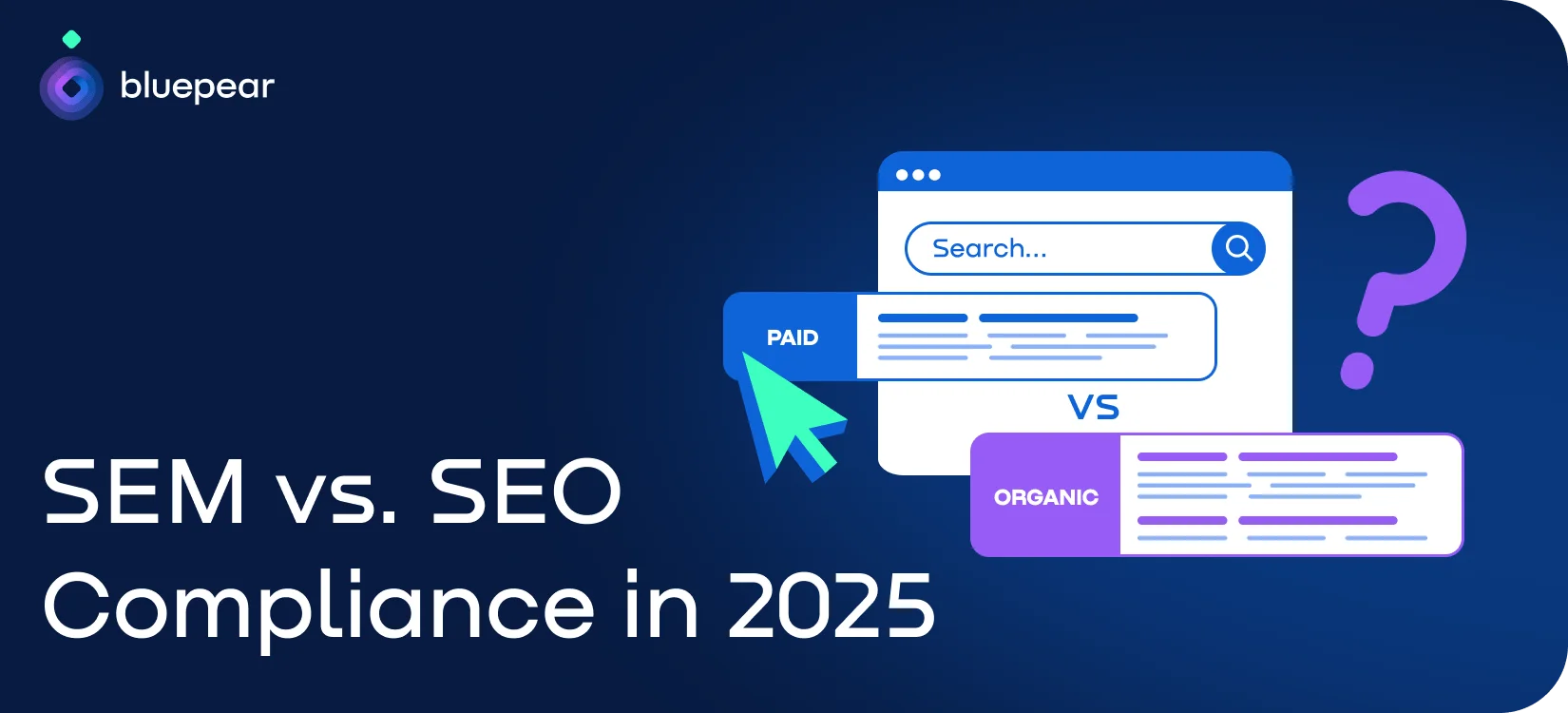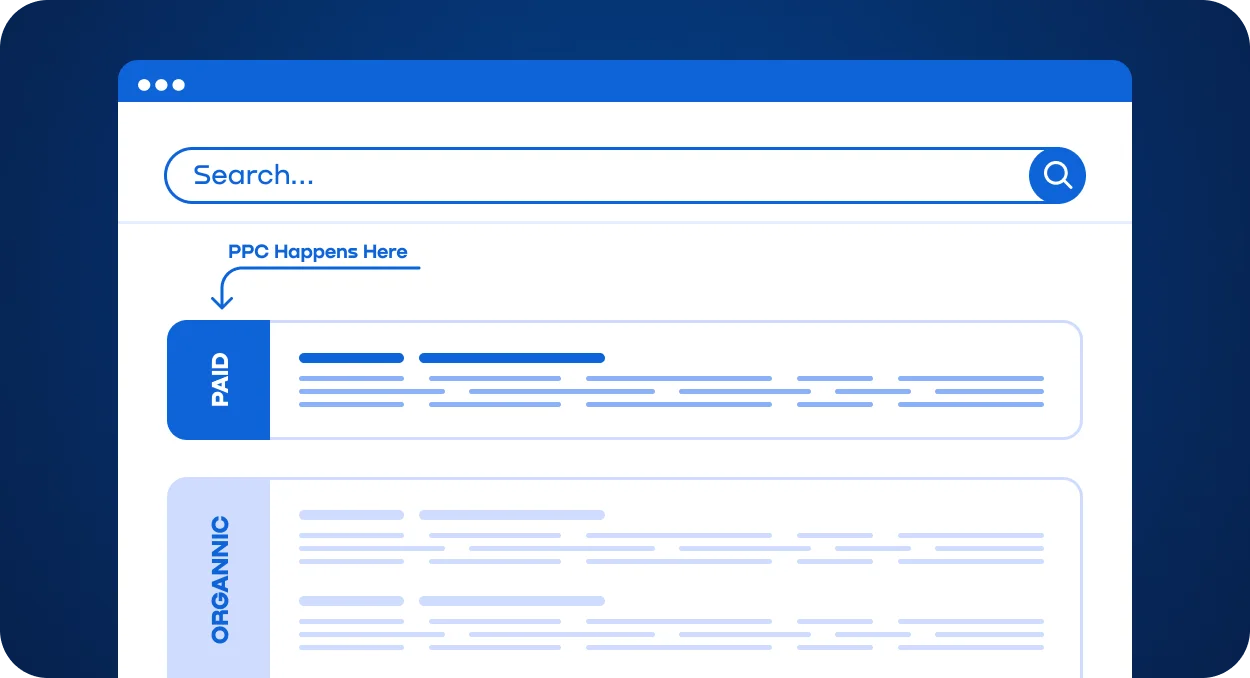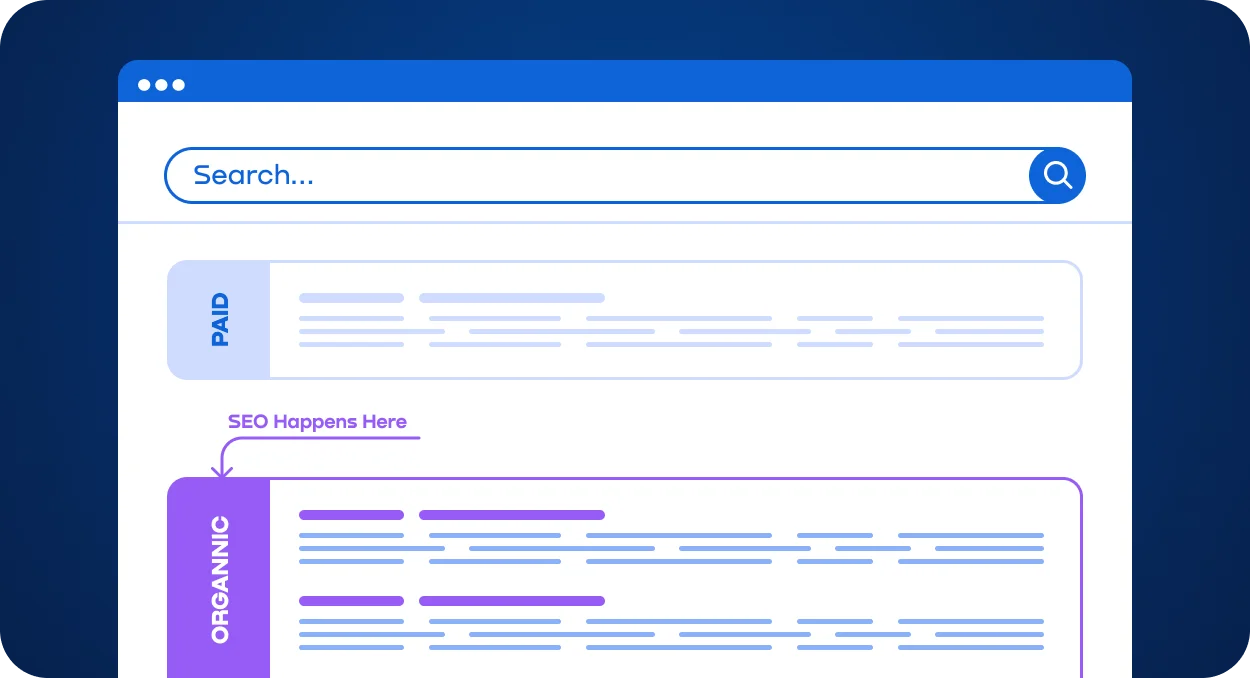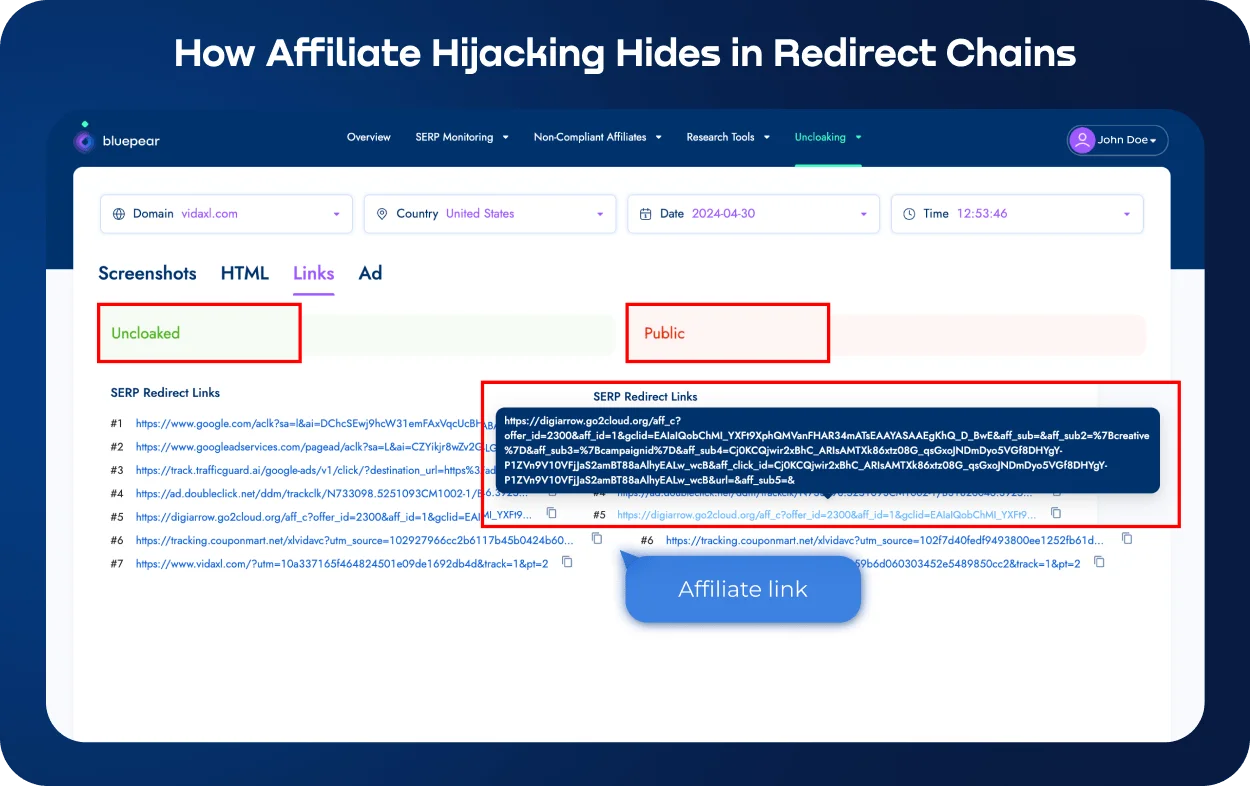
Contents
When it comes to SEO and SEM compliance, technical checklists are usually the main focus. SEO teams check the content, page structure, and EEAT, while sem makes sure that ads follow platform rules and landing pages are up to par.
Brand queries, anyway, remain a blind spot. In PPC vs SEO, competitors and affiliates often bid on your branded keywords, diverting valuable SEM traffic. Cloaked redirects and fake coupons change the way users move through your site and mess up conversion data. Even official promo codes can change how credit is given and hide conversion details.
This article will show you SEO vs SEM problem, the core SEO SEM difference and how to uncover these leaks, gather solid evidence and set up ongoing monitoring to get an accurate view of CAC, ROAS and the real contribution of brand traffic.
SEO and SEM compliance. Core rules and common gaps
SEO and SEM compliance is mostly about making sure your content is good, your site is technically sound, and you show that you are an expert, an authority and trustworthy (EEAT). To follow search engine rules, teams check the structure of the page, the canonicalization, the internal linking and the accuracy of the content.

SEM compliance makes sure that paid campaigns follow the rules of the platform. This means keeping an eye on the quality of the landing page, the relevance of the ad copy, and the correct use of brand terms. Regular audits make sure that targeting, bids, and creatives follow the rules. Even though these are standard practices, SEO and SEM audits often don't get the whole picture for branded queries.
Affiliate hijacks, competitors bidding on branded terms, cloaked redirects, and promo codes that aren't allowed can all mess up conversions, CAC, and ROAS. Understanding the SEO SEM meaning in practice is key, as brand queries add a level of risk that isn't often looked at in a systematic way, even though they show the most interest in buying and can impact your SEM ranking.

| Aspect | SEO | SEM | What gets missed |
|---|---|---|---|
| Focus | Content quality, EEAT | Paid campaign compliance, landing pages, ad copy, targeting, bids, brand term usage | Brand queries in paid search – affiliate hijacks, competitor bidding on branded terms, cloaked redirects, unauthorized promo codes |
| Audit areas | Page structure, canonical tags, internal linking, content accuracy | Ad relevance, landing page quality, campaign setup, targeting and bid strategies | Full branded query picture, including hidden redirects, masked affiliate IDs, and non-compliant promo codes |
| Frequency | Regular site audits, periodic content review | Ongoing campaign monitoring, periodic audits | Systematic monitoring of branded keywords across devices, GEOs, and time slots is rare |
| Impact if it’s missed | Minor content or technical issues | Policy violations in campaigns | Distorted CAC, ROAS, attribution errors, missed revenue opportunities, damaged brand trust |
Why branded search queries matter for P&L
Have you seen your branded CPC or CPA rising unexpectedly? Often, competitors or affiliates are taking clicks from your keywords and that directly eats into your budget eroding the value of your SEM ranking. Even a small increase in spend can erode ROI if it goes unnoticed.
At the same time, last-click attribution often shifts to these partner channels. It might look like your direct and organic traffic is lower than it really is, which makes it hard to figure out which channels are actually bringing in value, a common challenge in SEO vs SEM analytics.
Outdated promo codes, unofficial coupons, and proxy landing pages make things even more dangerous. Customers may see offers that aren't always the same or pages that aren't clear, which can make them angry and hurt your brand's reputation.
To sum up, branded traffic is a very important asset. If you don't keep an eye on it, you could end up wasting money, getting inaccurate reports, and losing money. By keeping an eye on these queries in a systematic way, you can see how well your campaigns are really doing and have control over them.
Red flags
When you look at branded campaigns, there’re a few signals that usually indicate problems. If your branded CPC is increasing even though you haven't changed your bids or targeting, it's worth taking a closer look. This’s often caused by competitors or individual affiliates competing for the same keywords.
A decrease in CTR or conversions with stable landing pages and offers is also a cause for concern, indicating that traffic is being lost somewhere along the way or that SEM traffic is being lost somewhere along the way or that users are encountering proxy pages or outdated offers.
Sometimes you can notice sharp spikes in payments to individual partners, and attribution "goes" to last-click - a direct indication that part of your traffic is being stolen. In Auction Insights, the share of impressions drops, new domains appear, overlapping your ads, and in the SERP, "official" sites, couponers and showcases with crafty URLs pop up.
Even if you look at time and geography, you may notice instability: at night or in other countries, users see completely different ads and redirects that are not present in your main campaign. All of these signals together provide a picture of a broken brand compliance layer that requires attention and a refined SEO and SEM in digital marketing strategy.
Unexpected increases in CPC or attribution shifts often point to hidden PPC fraud risks in SEM, including competitor bidding and affiliate hijacks.
Where compliance breaks in practice
In practice, compliance violations most often manifest themselves in several persistent patterns. Brand bidding and ad hijacking remain among the most noticeable issues: partners or competitors copy your creative or use direct links through their affiliate programs. Some teams try tools like brandverity and adthena alternatives, but coverage is still partial compared to automated monitoring. As a result, some of the traffic that should have gone to you directly goes to them, distorting reporting and increasing the cost of brand campaigns.

Another serious pattern is cloaked redirects. Here, the user sees one path on the site, and the moderator or platform sees a completely different one. Often, such redirects hide affiliate ID or hidden traffic routing, a critical difference between SEO and SEM to catch. Without tools that capture these chains, you simply won't notice that some of your clicks and conversions are being "leaked" through intermediaries.
Last but not least, "official" coupon and promo aggregators make things even more confusing. Outdated or unauthorized offers show up in search results or on third-party websites. This makes users less likely to click on them, lowers CTR, and messes up attribution.
Bluepear helps you fill in all of these gaps, a core part of a modern SEO and SEM strategy. The system automatically finds hidden redirects, follows chains all the way to the final landing page, keeps track of affiliate IDs, and checks coupons to make sure they are real. You can see the whole traffic path this way and know exactly where your brand queries aren't working as well as they should.
| Problem | How it works | How Bluepear solves it |
|---|---|---|
| Brand bidding or ad hijacking | Partners copy ad creatives or use direct links via affiliate programs | Tracks all affiliate links, automatically detects duplicates and redirects, real-time reporting |
| Cloaked redirects | Different paths for users vs. moderators, hides affiliate IDs | Uncloaking: automatically reveals masked redirects and logs full chains to the final landing page |
| “Official” coupons or promo aggregators | Outdated or unauthorized offers appear in search results or on third-party sites | Coupon verification, monitoring of promo aggregators, extended traversal beyond first click, detailed reports on validity and violations |
Practical framework to protect your branded traffic
You need to take a structured approach to protect your brand layer, a crucial element of any successful SEO and SEM strategy. Let's look at it together:
-
• First, you have to own the SERP. With a dedicated budget, try to get a high impression share on exact and phrase match keywords. This makes sure that your ads and official listings are the first things people see when they search for your brand improving your overall SEM ranking.
-
• Next comes evidence collection. Capture SERP screenshots, full redirect chains, the final landing page, and log timestamps, GEO and device information. These packages allow your team to prove violations and act decisively.
-
• Affiliate governance is crucial. Set clear rules: forbid unauthorized brand-PPC, direct links, or cloaking. Enforce sanctions, track chargebacks, and maintain whitelists of trusted partners.
-
• Attribution controls help you keep reporting accurate. Put each brand campaign in its own reporting block, look at last-click and data-driven models side by side, and keep an eye on the percentage of conversions that come from brands versus non-brands.
-
• Landing pages must match the brand's goals. Users shouldn't be sent to a generic homepage; instead, every branded click should take them to a specific page that is optimized for conversion.
-
• Finally, build a monitoring cycle. Test campaigns regularly across GEOs, devices, and time slots. Set up alerts via Slack or email, and define escalation procedures so that any violation triggers immediate action.
This framework turns your branded traffic from a vulnerable point into a protected asset, making your marketing spend more predictable and your ROI clearer.
How Bluepear secures your branded layer of compliance
Bluepear tackles the brand layer systematically and breaks down complex threats into manageable modules. The SERP monitoring runs 24/7 across GEOs, devices, languages, and time slots. You see every ad and listing for your brand in real time, no matter where or when it appears protecting your SEM traffic and SEM ranking.
-
• Automatic detection. The uncloaking and redirect tracing module automatically reveals hidden redirects and affiliate IDs. Every path from the initial click to the final landing page is captured, giving you a clear view of where traffic flows and who is trying to divert it.
-
• Extend scanning. For coupons, bridges, and storefronts, Bluepear goes beyond the first click. It crawls coupon sites, review pages, bridge pages to find affiliates hiding behind indirect traffic sources. This extended coverage ensures you catch violations that traditional monitoring misses.
-
• Advanced dashboard and workflow. Bluepear also supports workflow management for violations. Each incident is tracked through statuses such as New, In Progress, Resolved, so your team always knows what’s being addressed. Projects can be set up in minutes, and initial results appear in about an hour. Keywords, cities, and GEOs are fully configurable, giving you control without delays.
-
• Notifications. alerts and reporting keep your team informed. Notifications go directly to email or Slack, with full CSV exports, SERP screenshots, and archived evidence. The platform keeps a transparent history of all incidents, making it easy to review, escalate, and take action.
Bluepear tackles the brand layer systematically with 24/7 search monitoring for brand compliance across GEOs, devices, and languages.
You can register, create projects and see the first results within an hour. Bluepear’s smart assistant even suggests keywords and guides you through navigation, helping new users get started quickly and confidently. So, with these modules working together, your branded traffic is constantly monitored, verified, and protected.
Playbook for implementing brand compliance monitoring
Step 1. Take stock of your brands and metrics
First, collect all your brands, target keys and GEO. Identify the metrics you'll be monitoring: Branded CPC, CTR, Conversions and impression share. This way you'll understand what's normal, and where clicks and money are already starting to get lost.
Step 2. Launch monitoring and gather evidence
Launch projects in Bluepear. The system itself will check the search results, partner links, coupons, and landing pages on different devices, in different countries and at different times. Record everything: SERP screenshots, redirect chains, snapshots of final pages, timestamps. With this data set, you'll immediately see where there are leaks in your sem traffic.
Step 3. Deal with violations and adjust campaigns
If you see violations such as hidden redirects, affiliates who steal traffic, or outdated coupons, you need to act. Raise them through the internal workflow, update offers or landing pages, and tweak brand bidding. So, watch every step so that you don't miss anything.
Step 4. Refine policies and check results
In a month, look at how the policies for partners have worked out, correct them where necessary. Restart monitoring to make sure that the violations have gone away. You need to make a report for the management: how many conversions were returned, how much budget was saved, and how the return on brand traffic has changed.
Conclusion
If you miss violations on brand search queries, the money goes straight out of the budget, and your ROI and CAC indicators are distorted. This’s money that can really pass you by. If you close these holes, the ROI of all the upper and middle channels will become honest and predictable.
Start small: create a project in Bluepear, add your keys and GEO, and you'll get the first results in an hour. You'll see where clicks are lost, which partners or coupons lead to lost conversions, and you'll get a complete picture of what's happening with your brand in search results, clarifying the true SEO SEM meaning for your business.
Don't wait a few days: set up monitoring, capture redirect chains, check coupons, track intruders, and react immediately. The system supports alerts in Slack and email, data export to CSV, screenshot archive and transparent action history.
FAQ
How do SEM and SEO compliance differ, and why is the "brand layer" separate?
Understanding the SEO SEM difference is key. SEO compliance checks the content, site structure, and technical aspects. SEM compliance monitors advertising campaigns, landing pages, and site policies. But brand inquiries create a separate layer of risk: competitors, affiliates, and outdated coupons can affect CAC, ROAS, and attribution, even if the basic audit is passed.
Is it legal to buy someone else's brand in the keys? What can really be limited?
The use of someone else's brand is strictly regulated. You can limit the display in the PPC for specific partners, track direct links, and detect cloaking. But it is impossible to completely "disable" competitors - Bluepear's task is to help fix violations and minimize losses, a smart SEO and SEM strategy.
How to quickly see the effect of "own the SERP" on the brand?
After starting monitoring, within an hour you can see who occupies positions in the search results, which clicks drive SEM traffic and SEM ranking, and where new redirects or coupons appear. The results allow you to make targeted decisions on budget and campaign settings.
What is considered sufficient evidence for an affiliate program or platforms?
A complete set of data is considered sufficient: SERP screenshots, redirect chains to the final landing page, timestamps, GEO and device. This allows you to prove violations and record them officially for internal work or when contacting partners.
How not to "burn out" the brand-CPC, achieving 90%+ coverage?
The rates need to be adjusted based on monitoring data and budget allocation. Keep track of where SEM traffic goes to ineffective partners, and where brand campaigns work effectively. Proper bid management and key segmentation by GEO and device allow you to achieve a high proportion of control without unnecessary costs, a fundamental SEO and SEM strategy.

